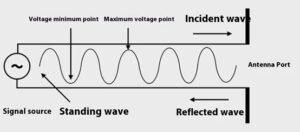EBYTE Special offers a variety of radio frequency (RF) modules. When beginning to use an RF module, one often considers which type of antenna would maximize communication distance. The selection of an appropriate antenna can be based on several factors:
Determine the Working Frequency Band
Identify the working frequency band of the RF module you are using, which can be found in the user manual. For example, a 433MHz LoRa modul typically operates within the 410.125 to 493.125MHz range. Therefore, you should select an antenna with a center frequency of 433MHz, and ensure that the antenna’s supported bandwidth matches or covers the operating frequency of the RF module. Additionally, common Wi-Fi modules may use both 2.4GHz and 5.8GHz bands, so antennas that support multiple frequency bands are necessary for such RF circuits.
Determine the Type of Antenna
Antennas are mainly categorized into external and internal types based on their installation locations. The structure of the product will determine whether an external or internal antenna is more suitable. External antennas, installed outside the device, generally offer higher gain and are less affected by the environment but occupy more space, such as rubber duck, suction, fiberglass, panel, and Yagi antennas. Internal antennas, installed within the product, usually have relatively high gain, are compact, but are more affected by the environment, such as PCB, FPC, spring, and LDS antennas.
Determine Gain Requirements
The gain of an antenna determines its capacity to radiate and receive signals. High-gain antennas are suitable for scenarios requiring long-distance communication or operation in weak signal environments. However, high gain is typically associated with a narrow beam width, which may not be suitable for applications needing broad coverage. To appropriately determine the required gain, first establish the necessary coverage distance and whether there are obstacles in the communication environment. After understanding the communication environment, decide whether a narrow beam antenas 3.0 is suitable, then perform a link budget analysis considering all losses and gains at the transmitter and receiver, including transmission power, transmitter gain, transmission loss, receiver sensitivity, and receiver antenna gain.
Determine the Antenna’s Directionality
Antennas can be directional or omnidirectional. Directional antennas are suitable for scenarios where the signal needs to be sent or received in a specific direction, while omnidirectional antennas are suitable for communication in all directions. Using a directional antenna aimed at a specific receiving location with few obstacles typically results in longer transmission distances.
Determine the Antenna’s Input Impedance
Common transmission systems use an impedance of 50Ω, though some use 75Ω. When selecting an antenna, ensure that the output impedance of the RF module matches the antenna’s input impedance.
Consider Physical Size Requirements
In situations where size is a priority, consider the physical dimensions of the antenna. Typically, the smaller the antenna’s size, the smaller the area it radiates electromagnetic waves into space, which can significantly reduce communication distance. Therefore, when size must be maintained, it is recommended to choose antennas with a larger radiating area.
Antenna Standing Wave Ratio (SWR)
The standing wave ratio (VSWR or SWR) is a numerical value that measures the efficiency of wave transmission. A higher SWR indicates more reflection and lower transmission efficiency. In mobile communication systems, the SWR is generally required to be less than 1.5.
Antenna Cost

Finally, consider the cost of the antenna. When choosing an antenna, it is best to find a balance between performance and budget. Generally, cost correlates directly with the size and gain of the antenna.
The right antenna can enhance communication quality and expand the communication range. When selecting an antenna, it is essential to focus on parameters such as frequency band, matching impedance, gain, and polarization direction, with the antenna’s working frequency band and gain commonly found in the user manuals of wireless communication products.

